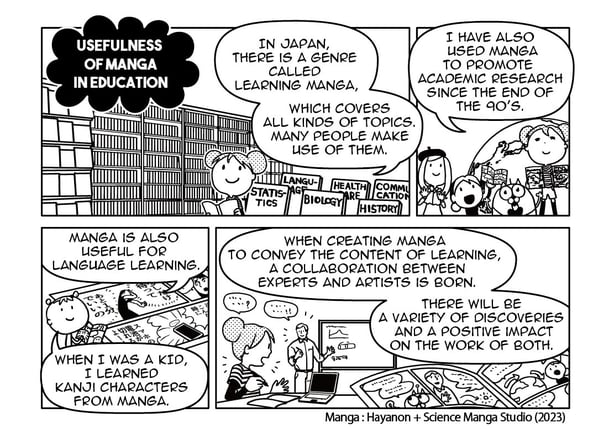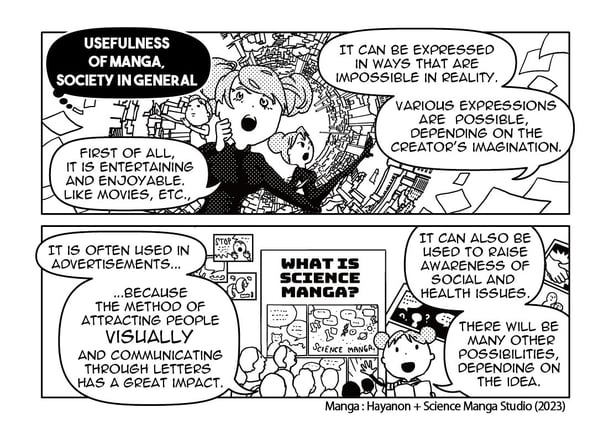Analysis: manga comics, cartoons and graphic novels have the potential to help people better relate to the world around them
By Kevin D. Delaney, TU Dublin; Hayanon and Naonori Kodate, UCD
Japan is well known for its innovative and cutting-edge technology, from robotics to automobiles. Companies like Sony, Toyota and Honda have made significant contributions to the world's technological advancements.
Many unique and innovative aspects of Japanese culture have earned it a global following. Japanese cuisine, including sushi, ramen, and tempura, is beloved worldwide, while Japanese culinary practices, such as the emphasis on freshness, presentation, and minimalism, have influenced the world's gastronomy. From a sporting perspective, Japanese martial arts such as Kendō, karate, aikidō and jūdō have their own unique history, philosophy and training methods while they all share a focus on discipline, physical fitness and mental development.
In recent years, influences from Japanese or Asian pop culture, such as cosplay, anime, emojis, video games and cat cafés are spreading globally. Represented by Demon Slayer: Kimetsu no Yaiba, Weathering with You, One Piece and Detective Conan, anime has proven its popularity by increasing sales during the pandemic.

Manga (漫画/マンガ), the Japanese style of comics and graphic novels, is probably one of the best known exports from Japan to the world. Typically drawn in black and white, manga offers a wide range of genres and styles appealing to different tastes. Some argue that manga originated in the late 19th century, while others claim the 12th century. While the English word would be "comics" and "cartoon", manga has a broader sense, including, for example, an essay by picture or by sketch. It can be literally translated as "pictures drawn aimlessly as I feel like it".
Manga displays certain characteristics. First, it presents information visually, and not as a text-based description. Second, unlike illustrations, there is a storytelling aspect, which explains the sequence of events and actions. Third, the auditory information is expressed by words as letters and sounds as onomatopoeia (with the exception of music).
It has made a significant social impact. Remarkable changes in this regard took place in Japan in the 1950s and the 1960s in particular, when the production and broadcasting of TV animation, as well as the publication of weekly manga magazines started. The early classics include Machiko Hasegawa's four-panel manga Sazae-san (1946-1974), Tezuka Osamu's robot-themed Astro Boy (1952) and medical anime Black Jack (1973), and Shotaro Ishinomori's Cyborg 009 (1969). Children’s superhero picture book Anpanman (1973) should not be forgotten!

Thematically, popular manga (and anime) often sets modern society as the stage, focusing on places and stories that people (children and adults alike) can relate to. Many titles address social issues such as mental health, gender identity, and sexuality as well as difficult subject matter such as the horrors of war. Manga also deals with superheroes (Dragon Ball, Doraemon) and fantasies (a world of magic, high technology, a planet other than the Earth).
How we can benefit from manga?
A key use of manga has been as an educational tool to teach students. It offers new and engaging ways to express complex scenarios and they are a valuable tool to help learners absorb and understand complex issues easily. It can provide a more engaging and memorable learning experience for visual or graphical learners who might find it difficult to read and absorb the meaning of long text passages. As a result, it has been used in language classes to help students learn Japanese and in literature classes to explore the cultural significance of manga.
It has also improved the quality of life for people recovering from traumatic brain injuries who may experience confusion or disorientation. It provides a multisensory experience and engages multiple areas of the brain while the complex storylines and characters in Manga can help to provide a sense of structure and continuity.

The plots and characters of such manga therapy have been shown to provide visual stimulation and help improve memory, attention, cognitive stimulation and problem-solving skills. Reading manga has been found to improve attention and memory in stroke patients. Graphic medicine (coined by a British comics artist, educator, and doctor, Dr Ian Williams) is now an established genre, using comics in medical education and patient care.
In addition to having a significant entertainment and educational value, manga is a highly effective intercultural communication tool. For example, manga signages are used to promote better understanding of customs and reduce errors in communication in companies and workplaces, with an increasingly diversifying workforce.
Manga is also used in research settings, particularly to explain complex issues to the general public or even researchers from different disciplines. Interprofessional communication can be enhanced when interdisciplinary collaboration is needed to find solutions to global and societal issues such as climate change. Another important role that manga plays in society is to visually present positive role models for young people.
Manga is just one example of how Japanese culture has influenced the worlds of education and communications. Maybe it's time to work with our manga artists to communicate with and educate a generation that it too busy to read detailed text and has become more literate in all kinds of visual representation.
The Experience Japan series of events celebrating Japanese culture and the Japanese community in Ireland is currently underway
Dr Kevin D. Delaney is an Educational Developer for the Human Capital Initiative Convene Project at TU Dublin with a particular focus on the areas of Creativity, Human Centred Design and Innovation for Enterprise. Hayanon is a mangaka - a master of Japanese manga - who writes and illustrates comic strips about science topics such as auroras, global warming, cosmic rays and many more for magazines, newspapers, universities, research institutes, JAXA and NASA. Dr Naonori Kodate is an Associate Professor in Social Policy and Social Robotics at UCD and founding Director of UCD Centre for Japanese Studies.
The views expressed here are those of the author and do not represent or reflect the views of RTÉ

